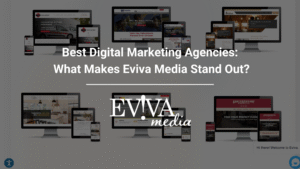As a small business owner, you already know that marketing is essential to your success, so you’ve done a bit of homework and passed digital Marketing Terms 101 with flying colors. You’ve covered the basic terms, like:
- SEO (search engine optimization)
- CRM (client relationship management)
- CPC (cost-per-click)
- CPM (cost per mile)
- B2B (business-to-business) vs B2C (business to consumer)
You’re ready to dig in a bit deeper so you can take a more active role in marketing decisions for your brand. Now, it’s time for digital Marketing Terms 201.
Understanding More Advanced Digital Marketing Terms
It can seem a bit overwhelming when you first begin to familiarize yourself with the most used and vital terms in today’s digital marketing world. Once you’ve had time to wrap your head around the basics, though, you realize they’re barely scratching the surface. Before you know it, you’re several levels down a search engine rabbit hole, just trying to make sense of how to best promote and market your business in an increasingly digital economy.
You don’t need to be the leading expert in the most obscure digital marketing terms to reach your target audience and optimize how you spend your marketing budget. You just need to understand meetings when you delegate these tasks so you can focus on doing what you started a business to do: run it.
Before your next marketing call or meeting, here are some key digital marketing terms to know:
- Bounce Rate – One of the most important metrics, bounce rate, is the number of visitors to your website who don’t visit any other pages or take any other actions; they “bounce” on a single page and leave the site altogether.
- Push Marketing – Sometimes, you don’t want to blanket the geographical area with ads because sending a direct message to a target audience of existing or potential customers is more effective. When you send out a “push” of targeted ads, email campaigns, and other direct communication, it’s push marketing.
- Pull Marketing – When you want to draw your audience in so they can engage with your brand, building trust and a sense of customer loyalty for future sales, you’re running a pull marketing campaign, also known as “inbound marketing.” It’s reliant on providing valuable, relevant content that draws visitors to your corner of the internet: blogs, video tutorials, high-quality social media posts, and even podcasts can be ideally suited to inbound campaigns.
- Brand Awareness – There’s a chance members of your target audience don’t need what you provide right now but will soon be in the market for your services. When that need arises, you want them to think of your brand first and come to you for the sale. Consumers are more hesitant to work with brands they’re not familiar with, and this is a key term and an even more important concept.
- Conversion Rate – The percentage of users who visit your site and complete a site-based transaction is your conversion rate. This can mean an actual purchase or filling out an information request form for follow-up. For example, if 200 people visit your site and 20 complete a transaction, your conversion rate is 10%.
Turning Digital Marketing Terms Knowledge into Info You Can Use
Every business owner wants to know they’re making the best possible use of their marketing budget, and none of them have time to learn the intricacies of the ever-shifting digital landscape. Partnering with the right marketing team can make all the difference, particularly one that specializes in devising powerful and impactful strategies that are also easy to understand. Eviva Media can help you take your marketing plans to the next level; call or contact us today to learn more!




